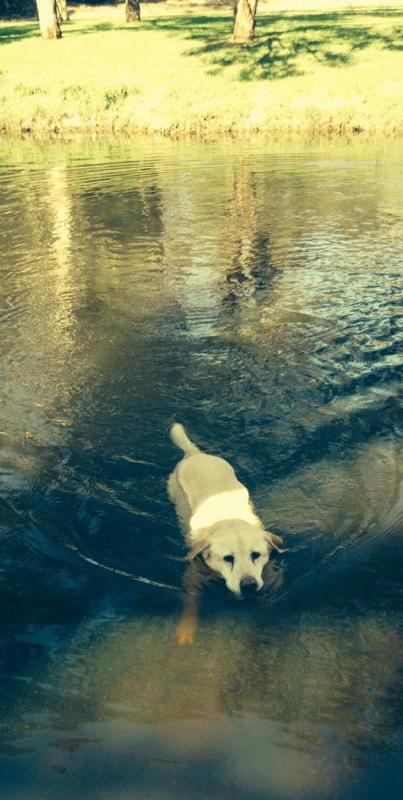When most dog training focusses on ‘rewarding the good’ and ‘punishing the bad’, the importance of habits (and habitual behaviour) is often overlooked.
Sure, a lot of dog behaviour is based on consequences. This is well understood.
But sometimes dogs do things because they ‘always have’. The regularity of performing this behaviour in itself drives further incidence of the behaviour.
It’s not necessarily that a dog learnt that it was appetitive to partake in a particular behaviour, but that it learnt that it could do that behaviour, and did that enough times that it became a habit.
Sure, sometimes this habit behaviours start because of the consequences. For example, a lot of reactivity behaviour. Initially, the dog was concerned about other dogs so barked at dogs when they got too close. This behaviour was reinforced, as the scary dog normally went away when that happened. However, while that may have been the dog’s thought process two years ago, after the dog has practiced barking at other dogs for a two year stretch, what was initially goal orientated behaviour became habitual behaviour – “I bark at other dogs because I saw them”.
Often, dogs perform behaviours because ‘they always have’, and there is nothing intrinsically appetitive about the behaviour or its consequences.
Take for example my girl Myrtle. At one stage, whenever I let her out the door, she would run barking to the fence – and she did this enough that it became a habit. Myrtle’s thought process wasn’t based on reinforcement or punishment. If you asked her why she ran to the fence, her answer would probably be about the antecedent (“I ran to the fence because the door opened.”). It’s a very simple behaviour chain.
Habits can be fixed by concentrating on the antecedent.
While on one hand habits are hard to break, many are also easy to solve by simple management like solutions, which concentrate on the antecedent. In Myrtle’s case, if I put her into that yard through the gate instead of the door, she did not bark at all. After a week or two of putting her into the yard through the gate, she simply ceased to perform her run-and-bark-to-the-fence behaviour. The antecedent was removed for long enough that Myrtle got ‘out of practice’ when it came to this habit. She now can enter the yard through the door with no problems.
Basically, if your dog always barks when he sees the postman, or always jumps up when you come home from work, or always scratches the upholstery in the car, your best way to fix this is to just not let the antecedent happen. Remove the postman from view, don’t allow your dog access to you when you come home from work, put him in a crate so he doesn’t scratch the upholstery of a car.
Every time a dog performs a behaviour, he gets in practice and it could become a habit. You need to minimise opportunities for dogs to practice any type of behaviour you do not want to occur.
Instill Good Habits
Want your dog to rest quietly in their bed of an evening? Tether them near or crate them on ‘their spot’ for them to settle there. When you remove the physical restraints, the dog will have learnt to sleep in that spot simply because they haven’t had opportunities to sleep in other places.
Don’t want your dog to barge through the front door when you open it? Scatter treats as you open the door – your dog will never practice barging through the door. They’ve learnt to be slow and stay inside (where the treats rain from the sky), and so never get in the habit of barging through the door in the first place.
There are many more examples. Let your dog practice doing all the things you want. Set them up for success in practicing good habits. When you stuff up, the dog learns alternative and possibly less desirable behaviours – and it’s easy for these to become a bad habit.
Habits and toilet training
Through rescue, I have had a lot of dogs come in that are used to living as ‘outside dogs’, and have never been toilet trained. Almost all these dogs have been easily toilet trained with no or minimal accidents inside. Why is that? I would argue that they are in the habit of toileting outside – they may not even know it’s possible to empty their bladder or bowels inside because they’ve never had the opportunity. A good habit has been formed.
The first two weeks that you bring a new dog into your home is the best time to instil good habits, especially surrounding toilet training. Many good habits can be formed by simply not allowing your dog or puppy to engage in bad toileting practices.
Ian Dunbar’s long term confinement area works on this principle. It prevents puppies from getting into the habit of toileting on carpet, tiles or floorboards by minimising opportunities for them to ‘get it wrong’.
However, there’s another upside to this – not only did you prevent the pup from learning the ‘bad habit’ of toileting on inside surfaces, they also learnt the ‘good habit’ of toileting on turf. It’s a win/win situation.
The moral of the story? Don’t let bad behaviours become habits! Everytime a problem behaviour is practiced, it becomes part of the dogs’ behavioural repertoire. Use management to break patterns of behaviour so they don’t become a bad habit.
Equally as important is to make sure your dog gets into good habits! Maximise the opportunities for your dog to practice behaviours you want.
Further reading:
When Management Succeeds
Ouch! Lead work





